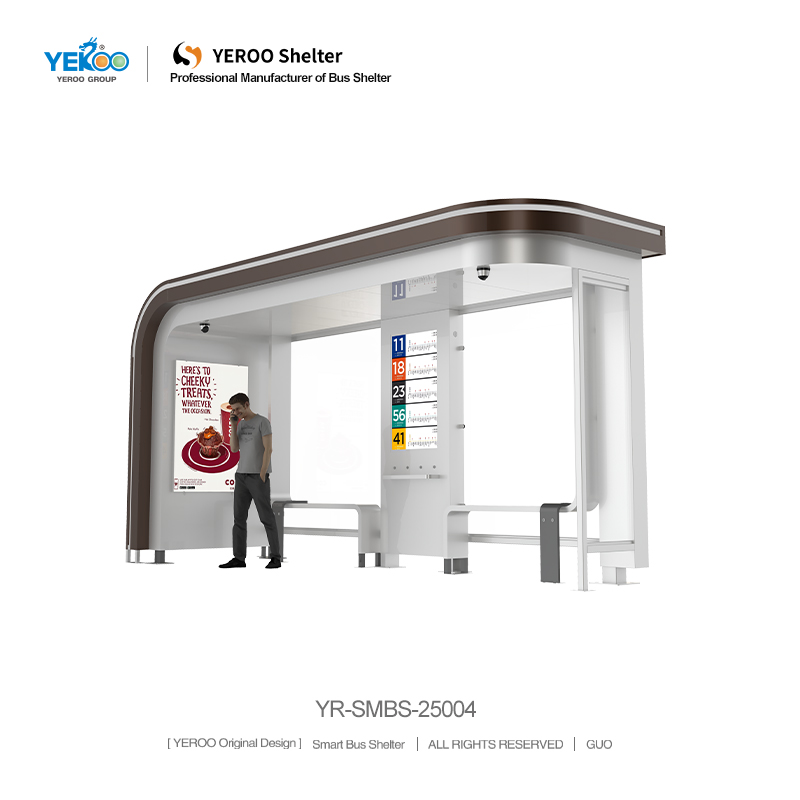How Does a Solar Bus Stop Shelter Save Energy and Improve Services
With the growth of modern sustainable city designs and upgraded public transport facilities, the solar bus stop shelter offers the dual benefits of energy efficiency and better commuter amenities. Unlike bus stop shelters that use grid electricity and thus emit high carbon emissions, solar bus stop shelters use clean and freely available renewable solar energy and provide more reliable, convenient, and friendlier services that enhance commuter experience. As leaders in sustainable public infra, Yeroo Group (https://www.yeroogroup.com/) designs city specific solar bus stop shelters. Below is how a solar bus stop shelter saves energy and improves services.
Reduce Grid Dependence with Clean Renewable Energy.
The most important way solar bus stop shelters save energy is by utilizing the sun and fossil fuel free solar energy. All Yeroo Group solar bus stop shelters have high efficiency solar panels embedded in the roof of the solar bus stop shelters that capture solar energy and convert it to electricity. This energy is stored in built in batteries capable of powering the shelter all night. The shelter lights, digital info displays, and other battery powered amenities are independently powered eliminating 80 to 90% electricity consumption from the city grid. And the best part is the solar bus stop shelter still provides access to electricity and amenities all night.

Take the example of a solar bus stop shelter in a sunny city. Solar bus stop shelters can generate enough energy to power LED lights and real-time info screens for an entire year and even send surplus energy back to the grid. By using renewable energy, solar bus stop shelters reduce carbon emissions and helps cities meet their sustainability targets and ment energy costs in the long run.
Maintain Consistent Service During Power Outages
Solar bus stop shelters gain an advantage over traditional bus stop shelters in terms of service reliability, especially when there is a blackout. Yeroo Group’s solar bus stop shelters use reliable batteries to store excess solar energy. Emergency lights, real-time transit displays, and emergency call buttons are all active and reliable when the grid fails. For example, during a power storm when grid lights are out in a neighborhood, solar bus stop shelters guide lights and screens to show the bus arrival times. All features of traditional shelters are completely dark and useless during blackouts. This is a huge safety issue for transit users because they completely lose tech features during the blackout. Solar bus shelters energy independence improves the reliability of public transit to be used in all situations.
Power Energy-Intensive Amenities Without Exhausting The Grid
Solar bus stop shelters can also provide amenities that consume a lot of energy to improve the commuter experience without overloading the grid.
Yeroo Group's solar bus stop shelters offer conveniences like USB charging ports for phone charging, climate control (heaters or fans), and bright digital screens for displaying transit info or safety alerts. Regular bus shelters would increase grid energy use, but solar bus stop shelters captures and self-generates energy to cover all their energy needs, even in high use and for switches used in amenities. For example, the solar bus stop shelter's USB charging port lets commuters waiting for late buses to charge their estimated dead phones while avoiding the use of grid electricity. Unsurprisingly, solar bus stop shelters justify their existence by softly and effectively beating their service quality.

Civic Agencies Save More Over Time
Freeing up the energy budget of the city, solar bus stop shelter saves energies in ways that translates to operational cost savings for the cities and allows cities to improve other transit services. These shelters mean no monthly electricity costs and no utility bills for city budgets. In addition to all of that, the units of the Yeroo Group's solar bus stop shelters are crafted in a way that allows for less upkeep to be provide which saves even more money to the cities. This is a big change from traditional bus shelters which incur ongoing electricity costs and may need more frequent repairs on the grid-connected components which are the batteries.
Consider this: a city that has 100 solar bus stop shelters can save thousands of dollars every year on electricity. That money can be put back into building more shelters or improving transit routes. Reduced operational costs allow cities to provide public transit services of higher quality while keeping to their budget.
Improved Safety Services Through Dependable Power Supply
Solar bus stop shelter increases safety services for commuters by making sure important safety features have a constant power supply. Yeroo Group’s solar bus stop shelter uses its solar-powered system to keep motion-sensing lights (for night visibility), surveillance cameras (for monitoring), and emergency call buttons (for people to reach help) operational all of the time. And even in places with unstable grid power, the solar bus stop shelter’s batteries ensure these security features never turn off. For example, a commuter walking to the solar bus stop shelter at dusk will activate the motion-sensing lights, improving the safety of the area, and the cameras will continue recording the scene even if grid power goes off. Safety features in a traditional shelter may be safely used and power will be lost, leaving commuters out of luck. Solar bus stop shelter’s power supply means it is a safer space for commuters.
Final Thoughts
Solar bus stop shelter from Yeroo Group represents two sides of the same coin. It uses renewable solar power making it more efficient, and provides more services with dependable amenities, consistent functionality, lower costs, and improved safety.
For cities striving to create sustainable and accessible public transport systems, investing in solar bus stop shelters is a win-win for the environment and the passengers. Solar bus stop shelters are innovative since they combine energy efficiency with improved service quality. These shelters are the future of environmentally friendly commuter infrastructure in cities.


